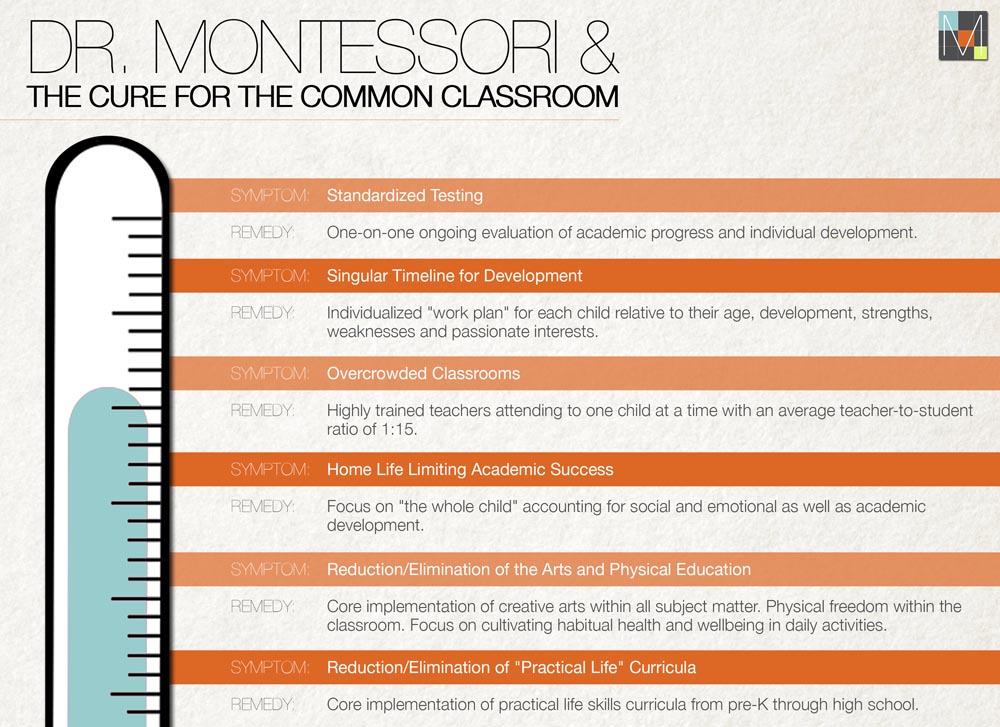This is a contributed post by Montessori App
by Montessori App | The Modern Montessori Community
“The world of education is like an island where people, cut off from the world, are prepared for life by exclusion from it.”
– Dr. Maria Montessori, The Absorbent Mind, 1949
In her statement above, Italian physician and education innovator Maria Montessori made a keen observation of the state of education that still rings true today: By educating without taking into account a child’s home life, culture, individual strengths and weaknesses, and the society into which they are growing, we are effectively placing a limitation on what they are prepared for in life.
Education in the 21st century too often requires teachers to teach by a book or strict map instead of by the student. It assumes that children must learn how to learn and provides a single-track path for them to follow, leading to student and teacher burnout and the dysfunctional systemic symptoms that plague education today:
- Academic Rivalry
- Home Life Limiting Academic Success
- Learning Style Limitations
- Limited Early Childhood Educational Preparation
- Low Morale / Limited Sense of Community
- Overcrowded Classrooms
- Reduction/Elimination of “Practical Life” Curricula
- Reduction/Elimination of the Arts and Physical Education
- Singular Timeline for Development
- Standardized Testing
Yet as individuals we know that each of us learn, act and think differently and are most effectively educated when treated as the unique people we are. The discord between individuality and standardization is a challenging one to resolve, but in doing so it is possible to not only improve the outcomes for each student, but for the community as a whole.
The Montessori method of education makes significant strides in this regard by “following the child,” allowing each young person to develop their strengths and discover and enjoy their style of learning.
1. Symptom: Academic Rivalry
Remedy: Personalized progress tracking without tests or grades.
2. Symptom: Home Life Limiting Academic Success
Remedy: Focus on “the whole child” accounting for social and emotional as well as academic development.
3. Symptom: Learning Style Limitations
Remedy: Various materials to accommodate visual, written, verbal and tactile learning in all subject matter.
4. Symptom: Limited Early Childhood Educational Preparation
Remedy: Heavy focus on early childhood education (birth to six years) to maximize learning alongside brain and cognitive development.
5. Symptom: Low Morale / Limited Sense of Community
Remedy: Cooperation between children in multi-age classrooms with older children teaching and assisting younger children.
6. Symptom: Overcrowded Classrooms
Remedy: Highly trained teachers attending to one child at a time with an average teacher-to-student ratio of 1:15.
7. Symptom: Reduction/Elimination of “Practical Life” Curricula
Remedy: Core implementation of practical life skills curricula from pre-K through high school.
8. Symptom: Reduction/Elimination of the Arts and Physical Education
Remedy: Core implementation of creative arts within all subject matter. Physical freedom within the classroom. Focus on cultivating habitual health and wellbeing in daily activities.
9. Symptom: Singular Timeline for Development
Remedy: Individualized “work plan” for each child relative to their age, development, strengths, weaknesses and passionate interests.
10. Symptom: Standardized Testing
Remedy: One-on-one ongoing evaluation of academic progress and individual development. It should be noted that Montessori schools do abide by state and federal testing regulations, but that content does not drive the curriculum or day-to-day goings on of the classroom.
For more information about the method and to find a school in your community, download Montessori App the official Montessori directory.
This is a contributed post by Montessori App

